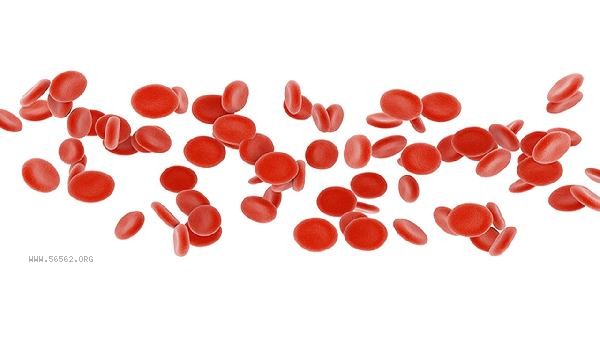Elevated red blood cell count may be caused by factors such as dehydration, altitude sickness, chronic hypoxia, polycythemia vera, kidney disease, etc. Long term elevated red blood cell count may increase the risk of thrombosis, increase the burden on the heart, and cause symptoms such as dizziness and headache.

1. Dehydration:
Fluid loss leading to blood concentration is a common cause of relative increase in red blood cells. After intense exercise, excessive sweating, severe diarrhea, or insufficient water intake can temporarily increase red blood cell concentration due to a decrease in plasma volume. This situation can be corrected by timely fluid replacement and usually does not cause organ damage, but it is important to be aware that continuous dehydration may trigger electrolyte imbalances.
2. High altitude sickness:
Low oxygen environment stimulates the kidneys to secrete erythropoietin, which accelerates the generation of red blood cells in the bone marrow to enhance oxygen carrying capacity. People who reside in areas with an altitude of over 2500 meters for a long time may experience physiological red blood cell count, accompanied by an increase in hemoglobin concentration. This compensatory change may increase blood viscosity, and the value will gradually return to normal after returning to the plain area.
3. Chronic hypoxia: Patients with chronic obstructive pulmonary disease, sleep apnea syndrome, and other conditions may compensate for hypoxia by increasing the number of red blood cells due to long-term hypoxia. This type of pathological increase is often accompanied by symptoms such as cyanosis of the lips and shortness of breath after movement. Elevated blood viscosity may induce pulmonary arterial hypertension, which needs to be improved through oxygen therapy and treatment of the underlying disease.

4. Polycythemia vera:
Abnormal bone marrow proliferation leads to excessive autonomous generation of red blood cells, which belongs to hematological malignancies. Typical symptoms include dark red complexion, itchy skin, and enlarged spleen. Laboratory tests show hemoglobin levels greater than 185g/L in males or greater than 165g/L in females. The incidence of thrombosis in this disease is 30%, and cell count needs to be controlled through bloodletting therapy or drugs such as hydroxyurea.
5. Kidney diseases:
Kidney cysts, renal artery stenosis, and other diseases may secrete erythropoietin abnormally, stimulating bone marrow hematopoietic dysfunction. This type of patient often presents with kidney damage such as hypertension and proteinuria. It is necessary to clarify the cause through renal ultrasound and renal function examination, and to effectively reduce red blood cell levels by treating the primary disease.
It is necessary to maintain a daily water intake of at least 2000ml to avoid excessive sweating after vigorous exercise and not replenishing water in a timely manner. High altitude workers are advised to regularly monitor their blood routine, and seek medical attention promptly when experiencing symptoms of high blood viscosity such as headaches and blurred vision. Smokers must quit smoking to reduce hypoxia stimulation, and high-risk individuals for cardiovascular and cerebrovascular diseases should take aspirin under the guidance of a doctor to prevent blood clots. Add anticoagulant ingredients such as celery and black fungus to the diet, and limit the intake of high purine foods such as animal organs to reduce blood viscosity. Engaging in aerobic exercise such as brisk walking, swimming, etc. 3-5 times a week for more than 30 minutes each time can promote blood circulation.









Comments (0)
Leave a Comment
No comments yet
Be the first to share your thoughts!